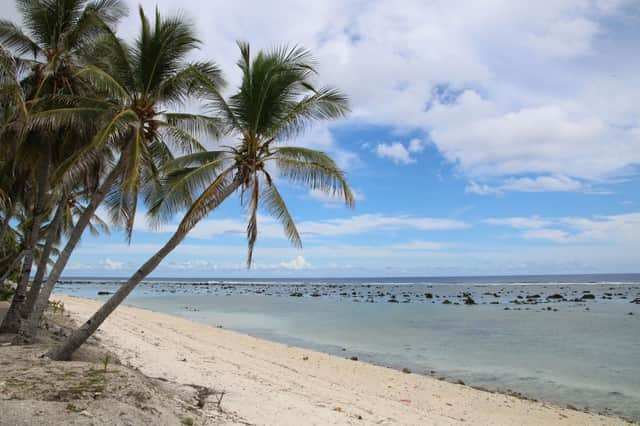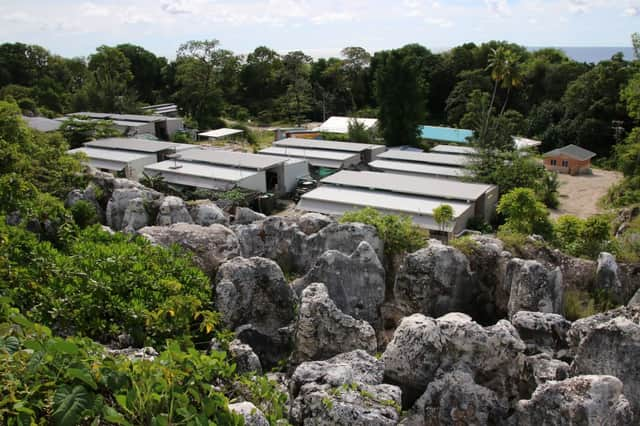Nauru: could government’s Ascension Island plan be based on Australia’s 'wretched' immigration policy?
This article contains affiliate links. We may earn a small commission on items purchased through this article, but that does not affect our editorial judgement.
and live on Freeview channel 276
Ministers are considering sending asylum seekers who come to the UK ‘illegally’ to Ascension Island if its plan to deport them to Rwanda falls through.
A government source confirmed on Sunday (6 August) that the Home Office is reviewing alternatives to its current deal with Rwanda as it awaits a Supreme Court judgement, due this autumn, on the legality of the policy. One ‘Plan B’ option being looked at is reviving plans to send migrants to British overseas territories, with one possibility being Ascension Island.
Advertisement
Hide AdAdvertisement
Hide AdThe volcanic island, situated 4,000 miles away from the UK in the middle of the South Atlantic Ocean, was previously considered by ministers who thought that its remote location would serve as a deterrent to those planning to cross the Channel to reach the UK. However, it was dropped as an option after a study conducted by the Foreign Office declared it unviable - citing the lack of adequate energy and water supplies, and the absence of a hospital.
Asked why the Ascension Island plan was being reconsidered, Sarah Dines, the home office minister, told Sky News: “Well, times change. We look at all possibilities. This crisis in the Channel is urgent, we need to look at all possibilities and that is what we are doing.”
Also as part of ‘Plan B’, ministers are understood to be in negotiations with at least five other countries - all believed to be in Africa - over a similar deportation deal to the one agreed with Rwanda. Some have been wondering whether these may the countries which the Foreign Office, under Boris Johnson’s government, engaged in talks with before agreeing a deal with Rwanda: Ghana, Nigeria, Namibia, Morocco and Niger — the latter which is currently in the throes of a military coup.
Other questions being asked include where exactly this Ascension Island idea came from in the first place - and some have as a result noted the similarities the plan holds with a scheme previously enacted in Australia, where the government sent asylum seekers to Nauru.


What was Australia’s asylum seeker policy?
Advertisement
Hide AdAdvertisement
Hide AdAustralia has used Nauru, a tiny island country in Micronesia, since July 2013 to detain asylum seekers who travel to Australia via boat. Once sent to the country, which is approximately a five hour plane journey away, migrants are told they are never allowed to settle in Australia.
Instead, they are supposed to be subjected to “offshore processing” in Nauru where their claims can be considered. However, charities and human rights organisations warned that no genuine resettlement takes place in Nauru - and that refugees are instead detained in appalling conditions with little or no knowledge of what will happen to them.
Médecins Sans Frontières, the famous independent humanitarian medical charity, said the detention was "medically irresponsible", while Amnesty International said migrants were in a "wretched situation".
As well as Frontières and Amnesty, the United Nations and Human Rights Watch are also among those who have documented and condemned Australia’s deportation and detention system. In 2016, The Guardian reported that more than three-quarters (77%) of those forcibly sent by Australia to Nauru were been found to be refugees - meaning they had a “well-founded fear of persecution” and were legally owed protection.


Advertisement
Hide AdAdvertisement
Hide AdIn June 2023, Amnesty International Australia announced that “the last people remaining on Nauru” were set to leave the country as the scheme came to an end.
In a statement, spokesperson Graham Thom said: “We hope this means that people who have continued to suffer in horrible conditions on Nauru will be allowed to recover in Australia [and] receive the medical care they need and be supported to find permanent resettlement solutions so they can move on with their lives.”
However, he added, there are still 82 people in Papua New Guinea who have been “abandoned by the Australian Government” as part of a similar scheme - and Amnesty urged that these people be brought to Australia for medical care and that they “be supported to find pathways to permanent resettlement.”


In a further statement, Amnesty International Australia continued: “The years that some people have spent in offshore detention has caused physical and mental harm to such an extent that many have lost hope. More than a dozen people have lost their lives as a result of the suffering they endured in Australia’s offshore detention system.
Advertisement
Hide AdAdvertisement
Hide Ad“The conditions on Nauru and in Papua New Guinea – refugees’ severe mental anguish, the intentional nature of the system, and the fact that the goal of offshore processing is to intimidate or coerce people to achieve a specific outcome – amounts to torture.”
How is it similar to the UK’s Ascension Island plan?
If the plan to send asylum seekers to Ascension Island goes ahead, those deported there will also not be allowed to ever resettle in the UK. In addition, as was the case with Nauru, migrants will not be resettled in Ascension Island - and instead are to be sent there for “processing”.
There are also similarities in terms of the conditions refugees can expect to be subjected to. Human rights charities told of the lack of healthcare on Nauru; there is no hospital on Ascension Island. The accommodation in Nauru did not have sufficient facilities; the Foreign Office previously warned of inadequate energy and water supplies on Ascension Island.


In terms of the mental health repercussions asylum seekers reportedly suffered on Nauru, similar situations could arise on Ascension Island - particularly as it is unclear exactly what resettlement options will be available.
Advertisement
Hide AdAdvertisement
Hide AdThe Times reported that those whose asylum applications are successful may be returned to the UK, but there is no information as of yet on what would happen to migrants whose claims are rejected.
It is not clear yet how likely it is that the government will move forward with the Ascension Island plan. However, the proposed policy of deporting asylum seekers to Rwanda has been consistently stalled by legal challenges ever since it was first announced in April 2022 - so ministers may begin to get desperate.
In June, the scheme was ruled unlawful by the Court of Appeal due to deficiencies in the East African country’s asylum system. And while the government has said it is confident the Supreme Court will overturn this judgement, other experts in the field are less convinced.
Comment Guidelines
National World encourages reader discussion on our stories. User feedback, insights and back-and-forth exchanges add a rich layer of context to reporting. Please review our Community Guidelines before commenting.
